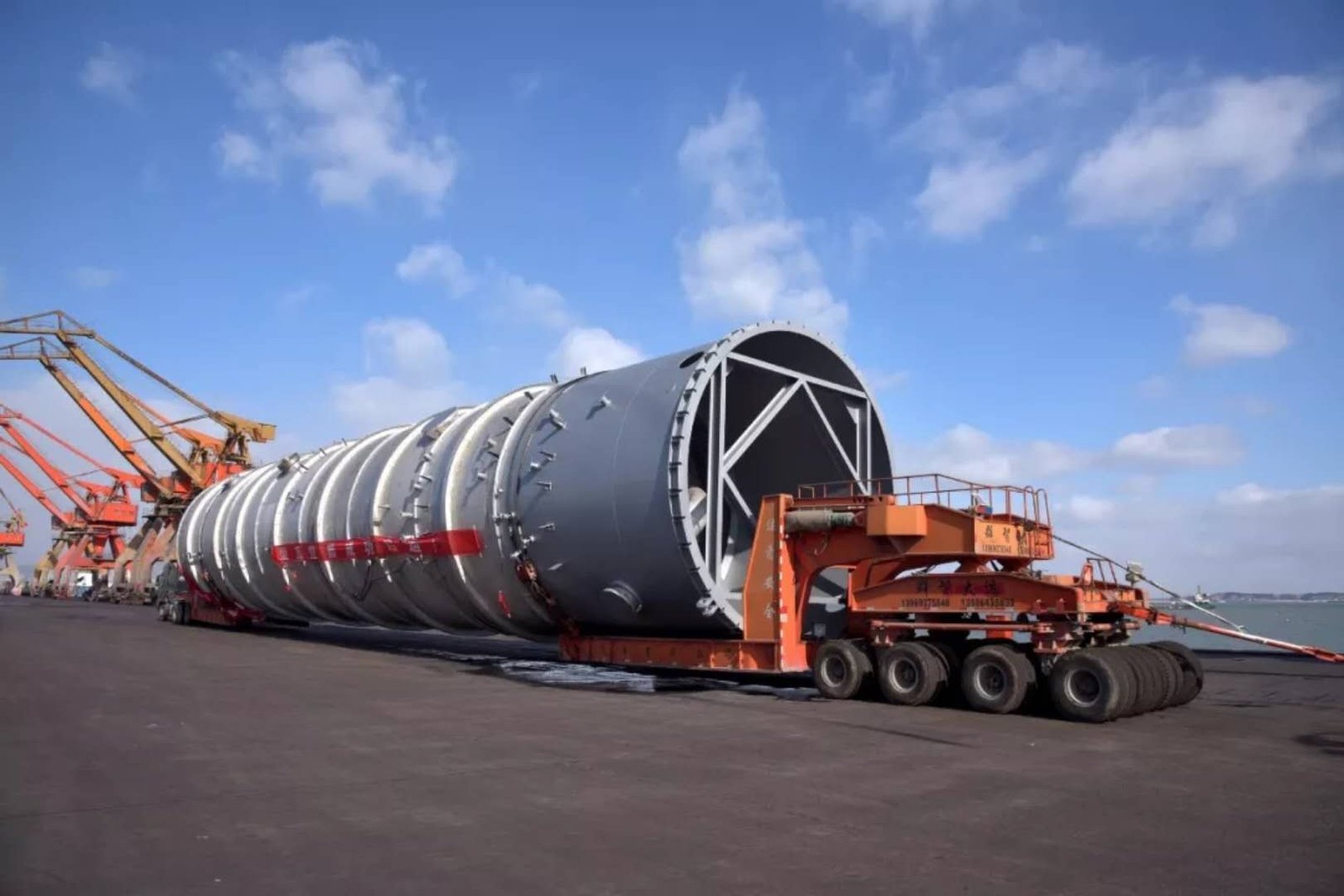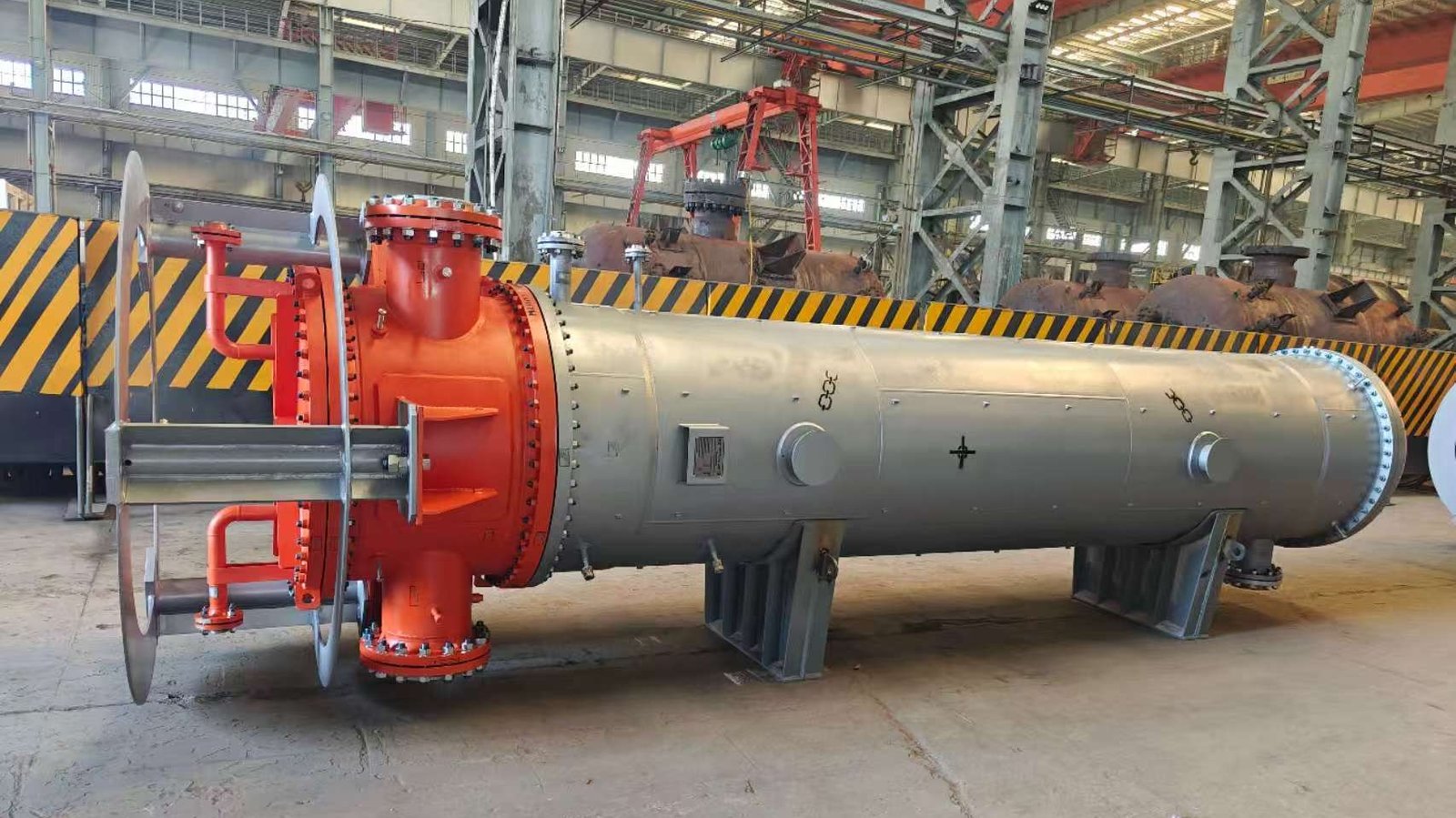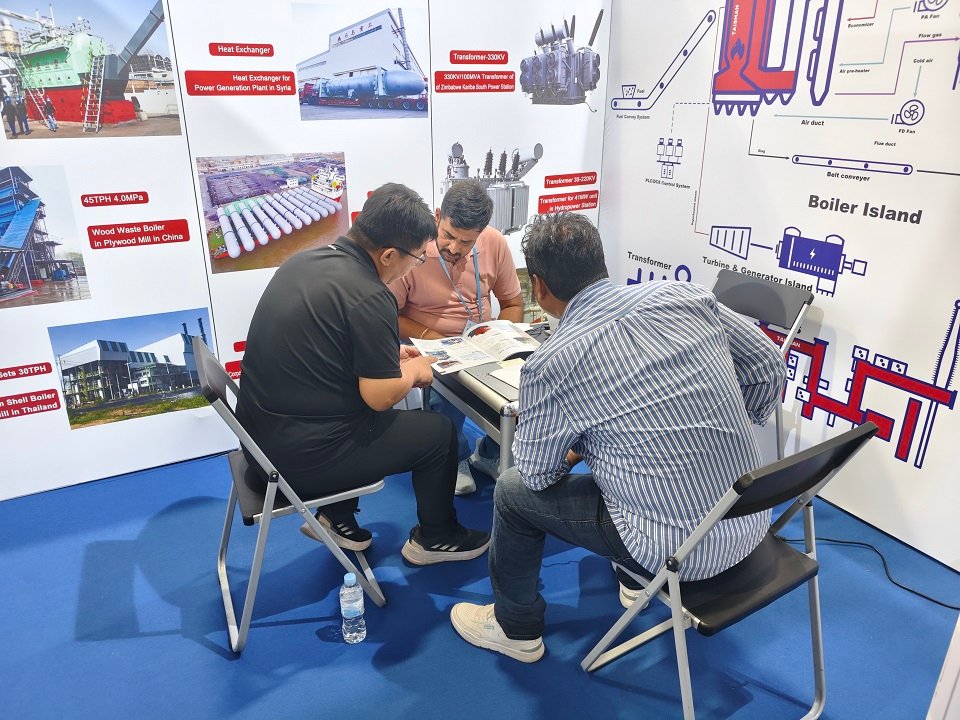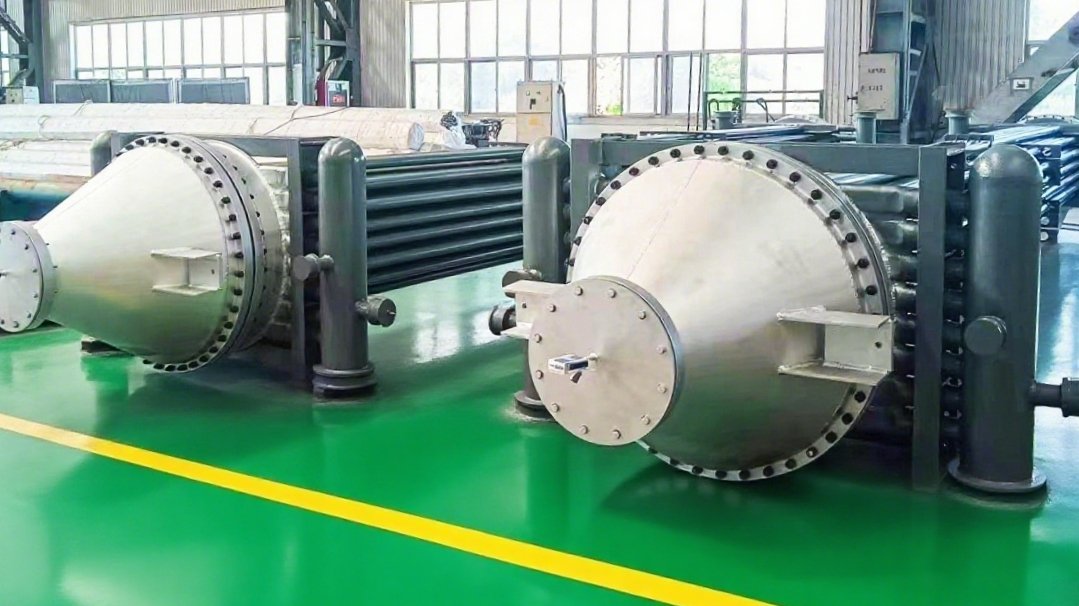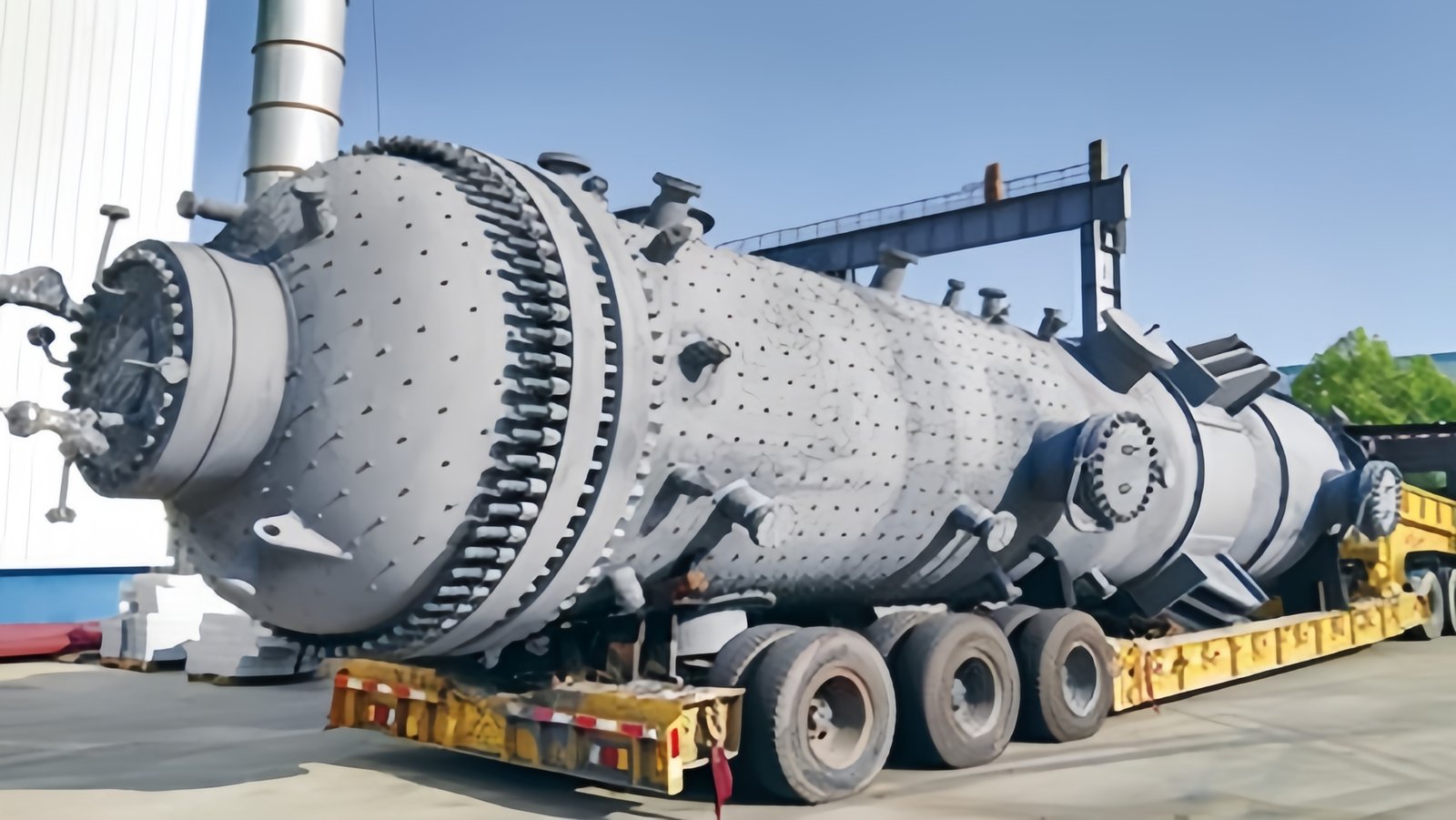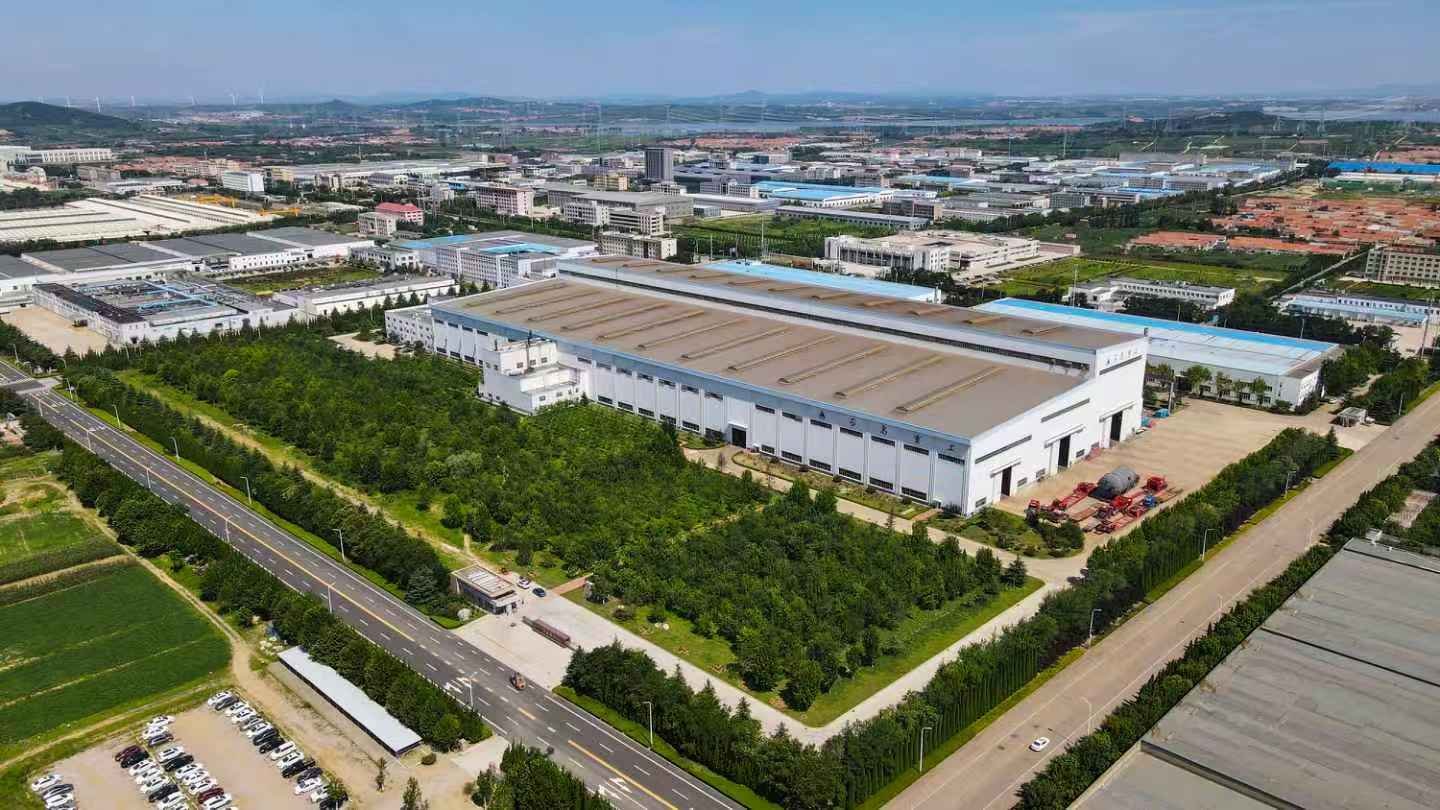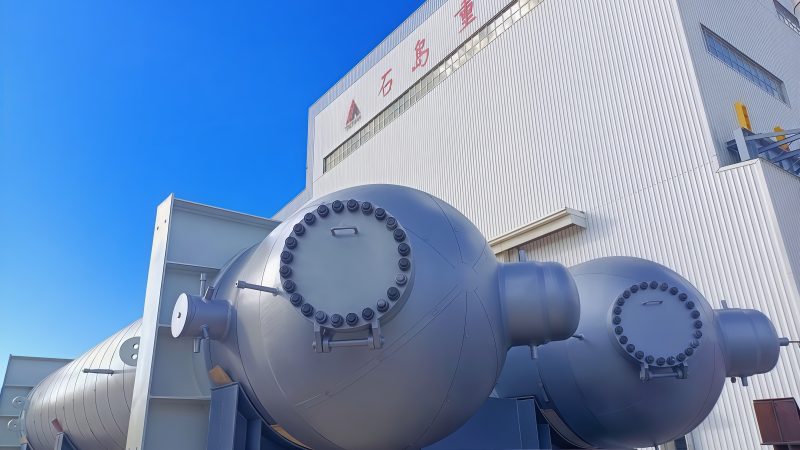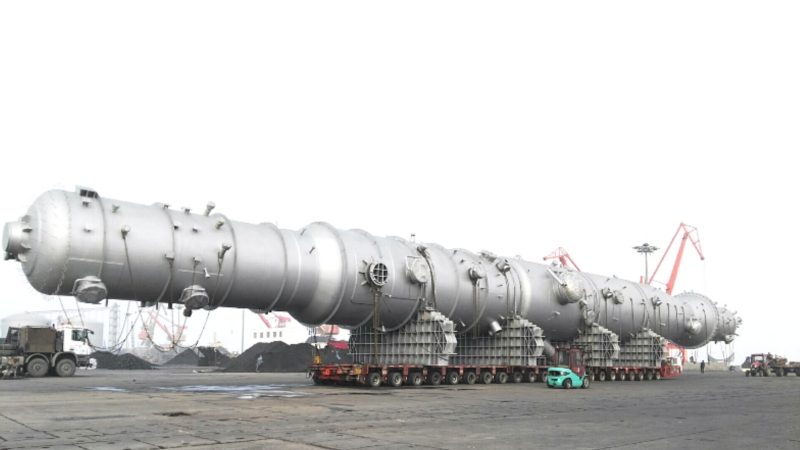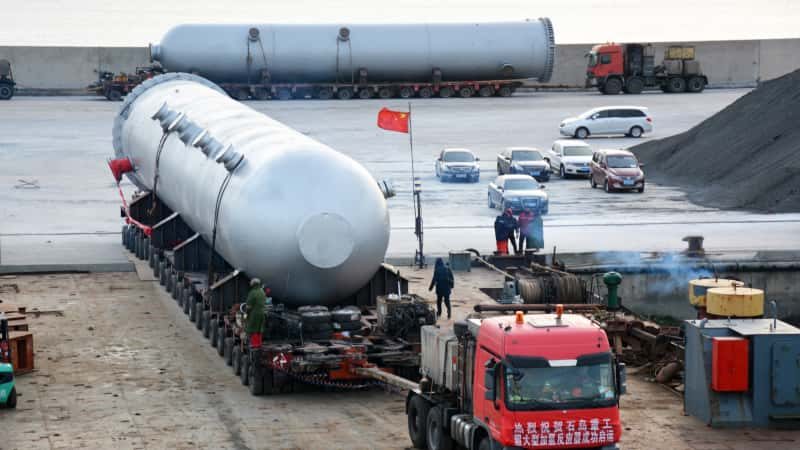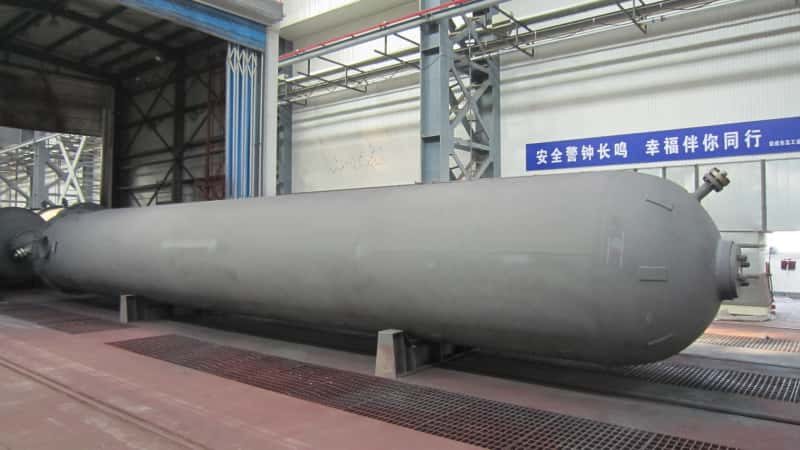What Are Scrubber Towers and How Do They Work in Industrial Applications?
Industrial exhaust and gas emissions often contain harmful pollutants that must be treated before release into the environment. Without proper treatment, these pollutants can lead to environmental degradation, regulatory fines, and health risks. One of the most effective technologies for treating such emissions is the scrubber tower. But what exactly is a scrubber tower, and how does it function? In this article, we’ll explore scrubber towers from a professional manufacturer’s perspective to help you understand their purpose, mechanisms, and how to choose the right one for your application.
A scrubber tower is an industrial pollution control device designed to remove gases, vapors, and particulates from exhaust streams by bringing them into contact with a scrubbing liquid, often water or chemical solutions, through a vertical tower system. The scrubbing process chemically or physically absorbs pollutants, making the emitted air cleaner and compliant with environmental regulations.
Scrubber towers are essential in industries like chemical manufacturing, power generation, metallurgy, and waste incineration. Choosing the right type of scrubber tower ensures optimal emission control, cost-efficiency, and compliance with air quality standards. Let’s explore how these systems work and what you need to know before installing one.
What Is a Scrubber Tower and What Are Its Key Components?

In industrial environments, the presence of harmful gases, fumes, and particulates in exhaust air streams can lead to severe health hazards, environmental pollution, and non-compliance with government regulations. When left unchecked, these emissions not only deteriorate worker safety but also result in costly fines and potential shutdowns. To address this challenge effectively, many industries employ scrubber towers, also known as gas scrubbers—high-efficiency air pollution control systems that remove contaminants from gas streams before release into the atmosphere. In this article, we’ll explain what a scrubber tower is, outline its key components, and walk you through everything you need to know to optimize or select a system for your industrial application.
A scrubber tower is a vertical or cylindrical air pollution control device used to remove gaseous pollutants and particulate matter from industrial exhaust gases through a process of liquid–gas or gas–solid interaction. Its key components include the inlet gas duct, spray nozzles or liquid distributors, packing media or trays, demisters, and a sump or recirculation tank, all housed within a corrosion-resistant tower body. These components work together to absorb, neutralize, or trap contaminants such as SO₂, HCl, ammonia, or dust particles, depending on the process requirements.
If you’re an engineer, plant manager, or industrial procurement officer, understanding the anatomy of a scrubber tower is crucial for maintenance, optimization, and compliance with emission standards. Whether you’re designing a new scrubber system or troubleshooting an existing one, the rest of this article offers a deep-dive into the inner workings, performance data, material selection, and design optimization of scrubber towers. Keep reading to discover how the integration of each component ensures environmental compliance and operational efficiency.
\
Scrubber towers are only effective for gas pollutants and cannot remove particulate matter.False
Wet scrubber towers can efficiently remove both gaseous pollutants and particulate matter by using a liquid scrubbing medium to capture or dissolve contaminants.
🏗️ Anatomy of a Scrubber Tower: A Complete Breakdown of Components
A scrubber tower is more than a hollow tube—it is a sophisticated engineering system comprising multiple synergistic parts. Here’s a breakdown of its major components and their functions:
| Component | Description and Function |
|---|---|
| Inlet Gas Duct | Introduces polluted air or flue gas into the scrubber tower under controlled flow and pressure conditions. |
| Spray Nozzles | Evenly distribute scrubbing liquid (e.g., water, alkaline solution) across the tower to initiate mass transfer. |
| Packing Media | High-surface-area structures (e.g., Pall rings, Berl saddles) increase contact between gas and liquid. |
| Demister or Mist Eliminator | Captures and removes entrained liquid droplets from the cleaned gas before it exits the tower. |
| Sump or Recirculation Tank | Collects used scrubbing liquid and solids for recirculation or disposal. |
| Tower Shell | The vertical body that houses all internal components; built from corrosion-resistant materials like FRP or SS. |
| Liquid Distributor | Ensures uniform distribution of scrubbing liquid over the packing media to maximize absorption efficiency. |
| Access Ports | Allow for maintenance, sampling, and inspection during operations. |
Each of these components plays a vital role in ensuring optimal gas–liquid contact, maximizing removal efficiency, and reducing pressure drop across the tower.
🌀 How the Scrubbing Process Works: Step-by-Step Operation
- Gas Entry: Contaminated gas enters the bottom (or sometimes side) of the tower through the inlet duct.
- Liquid Spraying: A network of spray nozzles at the top (or along the height) sprays scrubbing liquid downward in a counter-current or co-current flow.
- Contact Zone: Inside the packed bed, gas rises and liquid falls, interacting intensively to transfer mass (pollutants dissolve into the liquid).
- Droplet Separation: As the clean gas ascends, it passes through a demister, which removes fine mist droplets and prevents carryover.
- Clean Gas Exit: The decontaminated gas is discharged through the clean gas outlet to the atmosphere or next stage.
- Liquid Collection: The contaminated scrubbing liquid is collected in the sump and is either reused or treated and disposed of.
🔧 Scrubber Tower Design: Materials, Sizing, and Operating Conditions
When designing or selecting a scrubber tower, the following technical parameters and material specifications should be carefully considered:
Key Design Parameters
| Parameter | Typical Range / Consideration |
|---|---|
| Gas Flow Rate | 500–500,000 Nm³/h |
| Removal Efficiency | 90–99.9% (depending on gas and liquid used) |
| Pressure Drop | 50–250 mm H₂O |
| pH of Scrubbing Liquid | Depends on pollutant: acidic (e.g., sulfuric acid) or alkaline (e.g., caustic soda) |
| Operating Temperature | 10°C to 80°C (can be customized for high-temp gases) |
| Packing Depth | 1–3 meters typical |
| Tower Diameter | Based on flow rate and desired gas velocity (typically 0.5–3.0 m/s) |
Material Selection
| Part | Common Materials | Reason |
|---|---|---|
| Tower Shell | FRP, SS304, SS316L, PVC | Corrosion resistance and mechanical strength |
| Spray Nozzles | PVC, PP, Stainless Steel | Chemical compatibility |
| Packing Media | Polypropylene, Ceramic, Metal | Depends on temperature and chemical resistance |
| Demisters | SS wire mesh, PP mesh | High efficiency mist capture |
| Piping & Flanges | HDPE, CPVC, Stainless Steel | Pressure and corrosion performance |
\
All scrubber towers operate in counter-current mode only.False
Scrubber towers can operate in both counter-current and co-current flow modes depending on the application and pollutant type.
🧪 Real-World Example: Wet Scrubber for SO₂ Removal in Power Plant
Case Study: A coal-fired power plant in Southeast Asia faced regulatory pressure to cut SO₂ emissions by 95%. A custom-designed packed bed scrubber tower was installed with the following specifications:
- Flow Rate: 150,000 Nm³/h
- Scrubbing Liquid: Lime slurry (Ca(OH)₂)
- Efficiency Achieved: 97.5%
- Tower Material: FRP with ceramic packing
- ROI: Achieved in 18 months via fine-avoidance and emission credits
The client also benefited from modular design, easy maintenance access, and a demister with 99.9% droplet removal efficiency, leading to a visible improvement in stack opacity.
\
Scrubber towers have high maintenance requirements due to moving mechanical parts.False
Scrubber towers typically have minimal or no moving parts, making them relatively low-maintenance compared to other pollution control devices.
📈 Advanced Performance Optimization Strategies
To ensure peak performance, several enhancements can be integrated into scrubber systems:
- pH and ORP Monitoring for automatic chemical dosing
- Variable Frequency Drives (VFDs) to control fan and pump speeds based on real-time load
- Mist Eliminator Cleaning Systems to prevent clogging
- Dual-Stage Scrubbing for mixed pollutant streams (e.g., acid + dust)
Additionally, integrating a scrubber performance monitoring dashboard via IIoT can help reduce downtime and predict maintenance schedules using machine learning algorithms.
Conclusion
A scrubber tower is a vital component in the fight against industrial air pollution, offering an effective solution for removing harmful gases and particulates from exhaust streams. Understanding its core components—from the inlet gas duct to the demister—empowers engineers and operators to make data-driven decisions on system design, retrofitting, or maintenance. Whether you’re focused on compliance, sustainability, or operational cost savings, investing in a well-designed scrubber system is a move toward cleaner, safer, and more efficient industrial operations.
How Does a Scrubber Tower Remove Pollutants from Industrial Exhaust Gases?
Industrial exhaust gases often contain a wide range of harmful pollutants such as sulfur dioxide (SO₂), hydrogen chloride (HCl), ammonia (NH₃), and fine particulate matter. These pollutants, if not treated effectively, contribute to acid rain, respiratory diseases, and environmental degradation. Moreover, failure to control emissions can result in hefty fines and loss of environmental compliance certifications. The scrubber tower, a highly efficient gas cleaning device, offers a scientifically proven and economically viable solution. It works by introducing a scrubbing liquid that chemically or physically interacts with the pollutants, removing them from the gas stream before release into the atmosphere. In this article, we’ll explore in-depth how a scrubber tower removes these pollutants and ensures clean, compliant industrial emissions.
A scrubber tower removes pollutants from industrial exhaust gases through a gas–liquid contact process where the contaminated gas enters the tower and is exposed to a scrubbing liquid sprayed through nozzles. This liquid absorbs, neutralizes, or captures gaseous and particulate pollutants as it flows in counter-current or co-current direction. The gas passes through packing media that increases surface interaction, while mist eliminators at the top of the tower remove entrained droplets before the clean gas exits. This integrated process ensures the removal of up to 99.9% of harmful substances.
Whether you are operating in petrochemical, power generation, metallurgy, or manufacturing, understanding the internal workings of a scrubber tower can help you optimize performance, reduce emissions, and enhance the longevity of your equipment. Let’s explore the detailed pollutant removal mechanisms, types of scrubbers, efficiency metrics, and real-world examples of their application.
\
Scrubber towers work only through physical filtration mechanisms.False
Scrubber towers use both physical and chemical mechanisms to remove pollutants. Gaseous contaminants are chemically absorbed or neutralized, while particulates are physically captured by liquid droplets.
🧪 Mechanism of Pollutant Removal: From Contaminated Gas to Clean Emission
The scrubber tower operates on principles of mass transfer, where pollutants move from the gas phase to the liquid phase. This is facilitated by:
- Chemical Absorption: Where gas molecules dissolve into and react with a scrubbing liquid.
- Physical Impaction and Entrainment: Where particles collide with and are trapped by liquid droplets.
- Condensation: For certain volatile compounds which condense upon contact with cooler scrubbing liquid.
Core Functional Phases:
| Phase | Process Description |
|---|---|
| Gas Inlet Phase | Polluted gas enters the scrubber at high flow rates (e.g., 100,000 Nm³/h) |
| Liquid Spraying Phase | Liquid is sprayed using nozzles, creating fine droplets that fill the tower |
| Gas–Liquid Interaction | Contact occurs in a packed bed or tray section, enabling pollutant absorption |
| Chemical Reaction Zone | Absorption is followed by neutralization or dissolution reactions in the liquid medium |
| Mist Elimination | Entrained droplets are separated from the clean gas by demisters |
| Clean Gas Outlet | Clean, dry air exits the scrubber stack to be released into the atmosphere |
\
All types of pollutants are removed equally well in scrubber towers.False
Removal efficiency varies by pollutant type and scrubber configuration. Acid gases like SO₂ and HCl are efficiently removed using chemical absorption, while particulate removal depends on droplet size and gas velocity.
🌡️ The Science Behind: What Happens Inside a Scrubber Tower?
Mass Transfer Principles
Pollutant removal is governed by the equation:
N = K_L × A × (C_g – C_l)
Where:
- N = Mass transfer rate
- K_L = Liquid phase mass transfer coefficient
- A = Interfacial area
- C_g, C_l = Concentration of pollutant in gas and liquid phases
The packed bed inside the scrubber increases interfacial area (A) exponentially, allowing more gas to interact with the liquid simultaneously.
Chemical Reactions Involved
Below are some common pollutants and their removal reactions:
| Pollutant | Scrubbing Agent | Chemical Reaction |
|---|---|---|
| SO₂ | Ca(OH)₂ (lime slurry) | SO₂ + Ca(OH)₂ → CaSO₃ + H₂O |
| HCl | NaOH | HCl + NaOH → NaCl + H₂O |
| NH₃ | H₂SO₄ | 2NH₃ + H₂SO₄ → (NH₄)₂SO₄ |
| Cl₂ | NaOH | Cl₂ + 2NaOH → NaCl + NaOCl + H₂O |
These reactions are exothermic and enhance removal efficiency when temperature, pH, and contact time are optimized.
Real-Time Control Parameters
| Control Variable | Target Value | Purpose |
|---|---|---|
| pH of Scrubbing Liquid | 6.5–8.0 or specific | Ensures neutralization reactions proceed effectively |
| Liquid-to-Gas Ratio (L/G) | 5–15 L/m³ of gas | Determines removal efficiency and liquid loading |
| Droplet Size Distribution | 50–500 µm | Affects particulate capture and mist elimination |
| Pressure Drop | < 200 mm H₂O | Indicates flow resistance; higher drop may mean clogging or fouling |
\
Scrubber towers can remove volatile organic compounds (VOCs) effectively using water alone.False
Most VOCs are hydrophobic and require specialized solvents or oxidizing agents for effective removal, as water alone is insufficient.
📊 Performance Metrics and Efficiency Data
Below is a table showing efficiency values from real-world operating data for common pollutants in various industries:
| Industry | Pollutant | Scrubber Type | Efficiency (%) | Emission Standard Met |
|---|---|---|---|---|
| Power Plant | SO₂ | Wet lime scrubber | 97.5 | < 200 mg/Nm³ |
| Semiconductor | HF, HCl, Cl₂ | Packed bed wet scrubber | 98.9 | < 5 mg/Nm³ |
| Fertilizer Plant | NH₃ | Dual-stage acid scrubber | 95.3 | < 30 mg/Nm³ |
| Incineration Plant | Dioxins & dust | Venturi + packed tower | 99.9 (particulate) | < 10 mg/Nm³ |
A comparison of efficiency with different scrubbing agents:
| Scrubbing Liquid | Typical Applications | Removal Efficiency (SO₂) |
|---|---|---|
| Water | Low-solubility gases, cooling | 10–20% |
| NaOH (alkali) | Acid gases, HCl, SO₂ | 80–95% |
| Lime slurry | High-load SO₂ applications | 90–98% |
| Sodium hypochlorite | Chlorine, organics | 85–99% |
| H₂SO₄ (acid) | Ammonia, alkaline dust | 90–95% |
🔍 Case Study: Chemical Plant VOC Control Using Dual-Stage Scrubber
Problem: A pesticide manufacturing plant emitted high levels of VOCs and HCl during the formulation process.
Solution: Installed a dual-stage scrubber tower system:
- First Stage: Caustic (NaOH) scrubbing for acid gases
- Second Stage: Activated carbon absorption for VOCs
- Flow rate: 30,000 Nm³/h
- Efficiency Achieved: 99.1% HCl removal, 96.4% VOC reduction
- ROI: Achieved within 14 months by avoiding shutdown penalties and improving ESG scores
Real-time monitoring was integrated using pH sensors, pressure gauges, and an IIoT dashboard for remote alerts and predictive maintenance.
\
Scrubber towers are inefficient for fluctuating gas compositions and flow rates.False
Scrubber towers, especially modular and dual-stage systems, can be designed with feedback controls to handle variable flows and compositions effectively.
Conclusion
Scrubber towers play a vital role in industrial air pollution control by leveraging a combination of physical and chemical processes to remove pollutants from exhaust gases. Their modular design, high removal efficiency, and compatibility with a wide range of contaminants make them a universal solution across industries. From acid gas absorption to particulate removal and VOC neutralization, a well-designed scrubber system is a cornerstone of sustainable and regulatory-compliant industrial operation.
What Types of Scrubber Towers Are Used in Industrial Applications?
Industrial facilities face a major challenge in managing harmful gaseous emissions and fine particulates generated from combustion, chemical processing, and manufacturing. Without proper treatment, these emissions contribute to air pollution, regulatory violations, and occupational hazards. The solution lies in choosing the right type of scrubber tower, a critical component in air pollution control systems. However, not all scrubbers are created equal. Each type is engineered to handle specific pollutants, flow rates, pressures, and chemical loads. Selecting the wrong type could result in poor removal efficiency, high maintenance costs, or even complete system failure. This article offers an authoritative guide on the different types of scrubber towers used in industrial applications—helping you make informed, performance-driven decisions.
There are several types of scrubber towers used in industrial applications, including packed bed scrubbers, venturi scrubbers, spray towers, tray towers, and dual-stage scrubbers. Each type is tailored for specific pollutants—such as acid gases, VOCs, dust, or ammonia—and operational conditions like gas flow rates, pressure drop tolerance, and scrubbing liquid compatibility. Choosing the correct scrubber type ensures optimal removal efficiency, regulatory compliance, and process longevity.
Whether you’re designing an emission control system from scratch or planning a retrofit, understanding the various types of scrubber towers is essential. In the sections below, we’ll explore how each scrubber type works, its best-use scenario, performance data, and what factors to consider in selecting the right one for your plant.
\
All scrubber towers use the same internal configuration regardless of the application.False
Scrubber towers are designed with different internal configurations—such as packed beds, venturi throats, or trays—depending on the pollutant type, gas velocity, and removal mechanism required.
🏭 Overview of Industrial Scrubber Tower Types
Let’s break down the most widely used scrubber towers in industrial environments:
| Scrubber Type | Best for Removing | Flow Orientation | Typical Applications |
|---|---|---|---|
| Packed Bed Scrubber | Acid gases (SO₂, HCl, Cl₂) | Counter-current | Chemical plants, semiconductor, metal refining |
| Venturi Scrubber | Fine particulates, aerosols | Co-current | Foundries, smelters, incinerators |
| Spray Tower | Coarse dust, soluble gases | Counter or co-current | Fertilizer, food processing, cement plants |
| Tray Tower | Low-to-medium solubility gases | Counter-current | Petrochemical, pharmaceutical |
| Dual-Stage Scrubber | Mixed pollutants (gas + VOCs) | Series flow | Waste treatment, electronics, pesticide industries |
| Dry Scrubber (Non-tower) | SO₂, acid gases (low volume) | NA | Power plants, emergency scrubbers |
💨 Packed Bed Scrubbers (Absorption Towers)
How They Work:
Gas enters from the bottom of the vertical tower and flows upward, while the scrubbing liquid is sprayed from the top downward over a packed section. The packing provides a large surface area for gas-liquid interaction, enhancing mass transfer efficiency.
Internal Features:
- Packing materials (e.g., Pall rings, saddles)
- Liquid distributor
- Mist eliminator
- Recirculation tank
Use Cases:
- SO₂, HCl, HF, Cl₂ removal
- Used in chemical manufacturing, metal pickling, and semiconductor etching
Performance Snapshot:
| Parameter | Typical Value |
|---|---|
| Gas Velocity | 1–2.5 m/s |
| Removal Efficiency | 95–99.9% |
| Pressure Drop | 75–150 mm H₂O |
| Liquid-to-Gas Ratio | 5–15 L/m³ |
\
Packed bed scrubbers are ideal for particulate matter removal.False
Packed bed scrubbers are optimized for gas-phase pollutant absorption, not particulate removal, which is better handled by venturi scrubbers.
🌪️ Venturi Scrubbers
How They Work:
Gas and scrubbing liquid are injected into a venturi throat, creating extreme turbulence. High-velocity gas atomizes the liquid into fine droplets, which collide with particulates and remove them via impaction and interception.
Key Features:
- Adjustable throat section
- High-pressure drop design
- Cyclone separator or demister downstream
Use Cases:
- Dust, smoke, mists
- Common in metal foundries, boiler exhaust, asphalt plants
Performance Snapshot:
| Parameter | Typical Value |
|---|---|
| Gas Velocity | 60–120 m/s (in throat) |
| Particle Removal | Up to 99.9% (sub-micron) |
| Pressure Drop | 100–250 mm H₂O |
| Liquid-to-Gas Ratio | 5–25 L/m³ |
\
Venturi scrubbers require high energy input for optimal performance.True
Due to the high gas velocities and pressure drop, venturi scrubbers consume more energy than other types.
🌧️ Spray Towers
How They Work:
Scrubbing liquid is sprayed into the tower without packing, allowing gas to pass through a spray zone. Particles and soluble gases are removed as they contact liquid droplets.
Advantages:
- Simple design
- Low maintenance
- Low pressure drop
Use Cases:
- Pre-treatment scrubbers
- Emergency quench systems
- Food processing, fertilizer production
Performance Snapshot:
| Parameter | Typical Value |
|---|---|
| Removal Efficiency | 60–85% (gas), 70–90% (dust) |
| Pressure Drop | 20–50 mm H₂O |
| Suitable for Particles | >5 microns |
\
Spray towers are more efficient than packed bed scrubbers for acid gas removal.False
Packed bed scrubbers have significantly higher gas–liquid contact area, making them more efficient for acid gas absorption.
🧪 Tray Towers
How They Work:
Use perforated trays or bubble caps inside the tower to promote staged gas-liquid contact. Liquid accumulates on each tray, while gas bubbles upward through holes.
Ideal For:
- Gases with low-to-medium solubility
- Highly corrosive environments
Use Cases:
- Petrochemical plants, pharmaceutical manufacturing
Performance Snapshot:
| Parameter | Typical Value |
|---|---|
| Trays per Tower | 3–10 |
| Tray Spacing | 400–600 mm |
| Pressure Drop | Moderate |
| Efficiency | 85–95% |
⚗️ Dual-Stage Scrubbers
How They Work:
Consist of two scrubbers in series—often a venturi or packed bed followed by carbon or chemical polishing stage.
Use Cases:
- Multi-component emissions (e.g., acid gases + VOCs)
- Hazardous waste incineration, chemical synthesis
Typical Configuration:
| Stage | Purpose | Agent Used |
|---|---|---|
| Stage 1 (Primary) | Acid gas absorption | NaOH, lime slurry |
| Stage 2 (Secondary) | VOC neutralization | Activated carbon, KMnO₄ |
📊 Comparative Performance of Scrubber Tower Types
| Scrubber Type | Best for | Gas Removal (%) | Dust Removal (%) | Pressure Drop |
|---|---|---|---|---|
| Packed Bed | Acid gases | 95–99.9 | 10–30 | Medium |
| Venturi | Fine particulates | 30–60 | 90–99.9 | High |
| Spray Tower | Coarse dust, soluble gases | 60–85 | 70–90 | Low |
| Tray Tower | Medium solubility gases | 85–95 | 20–40 | Medium |
| Dual-Stage | Acid + VOCs + dust | 99+ | 95+ | Medium–High |
🏗️ Case Study: Dual-Stage Tower in Fertilizer Manufacturing
Problem: Ammonia and acid gas emissions exceeding 300 mg/Nm³
Solution: Installed dual-stage scrubber with H₂SO₄ in Stage 1 and activated carbon in Stage 2
Result: Reduced emissions to <20 mg/Nm³, meeting national standards
ROI: Achieved within 12 months from compliance cost savings and carbon credits
Conclusion
Understanding the different types of scrubber towers and their specific roles in industrial air pollution control is essential for engineering a compliant, energy-efficient, and reliable emission control system. From packed bed scrubbers that handle acid gases to venturi scrubbers for particulate removal and dual-stage systems for mixed emissions, each type serves a unique purpose. Selection should be based on the pollutant profile, flow characteristics, process chemistry, and regulatory targets.
What Factors Determine the Efficiency of a Scrubber Tower?
Scrubber towers are essential components in industrial pollution control, designed to remove harmful gases and particulate matter from exhaust emissions. However, simply installing a scrubber doesn’t guarantee high performance. Many systems underperform or fail entirely due to poor design, incorrect chemical dosing, or inconsistent operational parameters. These shortcomings can lead to environmental violations, high operating costs, and regulatory penalties. To maximize a scrubber tower’s pollutant removal efficiency, it’s crucial to understand the scientific and engineering factors that directly influence its performance. This article provides a complete breakdown of the key factors that determine scrubber tower efficiency, backed by real-world data, engineering principles, and optimization strategies.
The efficiency of a scrubber tower is determined by several interdependent factors, including the type of pollutant, gas–liquid contact area, liquid-to-gas ratio (L/G), droplet size, packing design, chemical reaction kinetics, pH of the scrubbing solution, residence time, gas velocity, and operating temperature. Optimization of these variables ensures higher pollutant absorption or capture, reduced pressure drop, and improved system performance across various industrial applications.
If you are a plant operator, environmental engineer, or facility manager, understanding these influencing parameters will help you troubleshoot performance issues, reduce energy consumption, and meet stringent emission standards. Read on for detailed insights, performance metrics, and control techniques that can elevate your scrubber tower’s operational efficiency.
\
Scrubber tower efficiency is solely determined by the type of scrubbing liquid used.False
While the scrubbing liquid is important, overall efficiency depends on multiple interacting factors such as droplet size, contact time, gas velocity, and system design.
🔬 1. Liquid-to-Gas Ratio (L/G Ratio)
The L/G ratio is the volume of scrubbing liquid used per volume of gas processed, typically expressed in L/m³. A higher ratio increases contact probability between pollutants and the absorbing liquid.
| Industry Application | Recommended L/G Ratio (L/m³) | Typical Efficiency (%) |
|---|---|---|
| SO₂ removal (lime slurry) | 10–15 | 95–99 |
| HCl removal (NaOH) | 6–12 | 93–98 |
| NH₃ removal (acidic solution) | 5–10 | 90–96 |
However, excessive L/G can lead to higher operating costs and mist formation without significant efficiency gain. The optimal point is where pollutant concentration begins to plateau.
\
Higher liquid-to-gas ratios always result in better scrubbing efficiency.False
While higher L/G improves mass transfer to a point, beyond optimal levels it can cause droplet carryover, higher energy consumption, and diminishing returns.
🌬️ 2. Gas Velocity and Residence Time
High gas velocity shortens residence time, reducing the opportunity for effective gas–liquid interaction. Conversely, very slow velocities may cause backflow or flooding.
| Parameter | Ideal Range |
|---|---|
| Gas velocity (tower) | 1.0–3.0 m/s |
| Gas velocity (venturi) | 60–120 m/s |
| Residence time | 1.5–3.0 seconds |
Residence time is especially critical for chemical reactions, where the rate of mass transfer and reaction kinetics need adequate duration to complete pollutant neutralization.
💦 3. Droplet Size Distribution
In spray-type and venturi scrubbers, droplet size plays a pivotal role in particle capture and absorption efficiency.
| Droplet Diameter (µm) | Efficiency for PM Removal |
|---|---|
| >500 | Poor (<60%) |
| 200–500 | Moderate (60–80%) |
| 50–200 | High (80–95%) |
| <50 | Very High (>95%) |
Smaller droplets increase the surface area but can be entrained with the exhaust gas if not captured properly by demisters.
\
Smaller droplets always lead to better scrubber performance.False
While smaller droplets improve surface area for absorption, they may increase mist carryover if the demister is inefficient, reducing net performance.
🧪 4. Scrubbing Liquid Composition and Chemistry
The chemical composition of the scrubbing solution determines how well it can react with or absorb specific pollutants.
| Pollutant | Scrubbing Agent | Reaction Type | Example |
|---|---|---|---|
| SO₂ | Ca(OH)₂ | Acid–base neutralization | SO₂ + Ca(OH)₂ → CaSO₃ + H₂O |
| HCl | NaOH | Neutralization | HCl + NaOH → NaCl + H₂O |
| NH₃ | H₂SO₄ | Acid-base | 2NH₃ + H₂SO₄ → (NH₄)₂SO₄ |
| VOCs | NaOCl or activated carbon | Oxidation / Adsorption | C₆H₆ + NaOCl → CO₂ + NaCl (simplified) |
The pH must be controlled precisely. For example, SO₂ removal is optimized at pH 6–7; too high and lime precipitates, too low and SO₂ passes through.
\
The same scrubbing liquid can be used for all types of gas pollutants.False
Different pollutants require tailored scrubbing agents for effective neutralization or absorption.
🧱 5. Packing Media Design (for Packed Bed Scrubbers)
In packed bed scrubbers, packing material dramatically affects the contact surface area, pressure drop, and gas–liquid distribution.
| Packing Type | Material | Surface Area (m²/m³) | Notes |
|---|---|---|---|
| Pall Rings | PP, SS, Ceramic | 150–300 | Excellent gas-liquid dispersion |
| Berl Saddles | Ceramic | 100–250 | Good chemical resistance |
| Structured Packing | SS, FRP | 250–500 | Low pressure drop, high surface |
Uniform liquid distribution via liquid distributors ensures that the entire packing is wetted evenly, avoiding dry spots which reduce mass transfer efficiency.
🌀 6. Demister Efficiency
The mist eliminator or demister pad ensures entrained liquid droplets (which may contain absorbed pollutants) do not escape into the atmosphere.
| Demister Type | Efficiency (%) | Recommended for |
|---|---|---|
| Wire Mesh | 95–98 | General-purpose applications |
| Vane-Type | 98–99.5 | High-velocity systems |
| Fiber Bed | >99.9 | Sub-micron droplet capture |
Failure to use efficient demisters leads to liquid carryover, corrosion in downstream piping, and emissions of partially treated gases.
\
Demisters are optional in scrubber tower design.False
Demisters are essential to prevent carryover of droplets containing pollutants or chemicals, ensuring true emission control and protecting downstream equipment.
🔋 7. Pressure Drop and Energy Input
Efficiency is often linked to energy input, especially in systems like venturi scrubbers where performance is governed by velocity and turbulence.
| Scrubber Type | Typical Pressure Drop (mm H₂O) | Energy Input Needed |
|---|---|---|
| Packed Bed | 75–150 | Low–Moderate |
| Spray Tower | 20–50 | Low |
| Venturi | 150–300 | High |
| Tray Tower | 80–200 | Moderate |
Higher pressure drop may increase efficiency but must be balanced with fan sizing and power costs.
📊 Efficiency Modeling and Performance Benchmarking
| Efficiency Factor | Impact Level | Control Method |
|---|---|---|
| Liquid-to-Gas Ratio | High | Flow meters, variable pumps |
| pH and Chemical Concentration | High | pH sensors, automated dosing |
| Droplet Size | Medium–High | Nozzle type and placement |
| Packing Wetting Efficiency | High | Use of redistributors, regular cleaning |
| Mist Elimination | Medium | Demister sizing and maintenance |
| Residence Time | Medium | Tower height, gas velocity control |
🏭 Real-World Example: Scrubber Optimization in a Semiconductor Plant
Challenge: Poor removal of HCl (remained at 60 mg/Nm³ vs limit of 20 mg/Nm³)
Diagnosis:
- pH of scrubbing liquid fluctuated to below 5
- Droplet size was too large (500 µm average)
- Demister was clogged, increasing carryover
Solution:
- Introduced pH sensor-based auto-dosing with NaOH
- Replaced nozzles with high-pressure atomizers (100 µm)
- Upgraded to vane-type demister
Result: Emissions reduced to <10 mg/Nm³, with improved operational stability and 20% energy savings due to optimized fan control.
Conclusion
The efficiency of a scrubber tower is not dictated by a single variable but by a complex interplay of engineering, chemistry, and fluid dynamics. Factors such as L/G ratio, gas velocity, droplet size, packing design, scrubbing chemistry, and mist elimination all play crucial roles in pollutant removal performance. Mastering these variables allows industries to design, operate, and maintain scrubbers that consistently meet environmental standards while minimizing operational costs.
How to Choose the Right Scrubber Tower for Your Specific Industrial Needs?
Choosing the wrong scrubber tower can result in catastrophic consequences—regulatory non-compliance, production shutdowns, corrosive damage, poor pollutant removal, and soaring operational costs. In today’s environmentally conscious and regulation-heavy industrial landscape, simply opting for an off-the-shelf solution is no longer viable. Each industry emits unique pollutants under specific operational conditions, and a one-size-fits-all scrubber system does not exist. The key to effective air pollution control is selecting the right scrubber tower tailored to your facility’s gas composition, flow characteristics, process limitations, and regulatory goals. This in-depth article will guide you step-by-step through the technical and strategic considerations to help you make an informed, performance-optimized decision.
To choose the right scrubber tower for your specific industrial needs, you must evaluate the type and concentration of pollutants, gas flow rate, scrubbing goals (removal efficiency, compliance), space and structural constraints, chemical compatibility, operating temperature and pressure, maintenance capacity, and budget. Based on these parameters, you can select between packed bed, venturi, spray, tray, or dual-stage scrubbers—each optimized for different pollutants and process requirements.
Whether you’re setting up a pollution control system for a new facility or retrofitting an existing one, selecting the ideal scrubber tower is one of the most technically important and financially impactful decisions you’ll make. In the following sections, we’ll show you how to align your operational realities with engineering requirements and emission targets, supported by technical charts, selection matrices, and case-based guidance.
\
Choosing a scrubber tower only depends on the price of the equipment.False
Price is just one of many factors—performance, chemical compatibility, pollutant type, maintenance, and regulatory compliance are far more critical for long-term success.
🧭 Step 1: Identify Your Pollutants – What Are You Trying to Remove?
The most critical starting point is determining what your scrubber needs to remove.
| Pollutant Type | Common Examples | Preferred Scrubber Type |
|---|---|---|
| Acid Gases | SO₂, HCl, HF, Cl₂ | Packed Bed, Spray Tower |
| Particulates | Dust, ash, metal aerosols | Venturi Scrubber |
| Alkaline Gases | NH₃, amines | Tray Tower, Acidic Spray Scrubber |
| VOCs | Benzene, formaldehyde, solvents | Dual-Stage, Carbon Polishing Scrubber |
| Mixed Streams | Dust + acid gases, VOCs + SO₂ | Dual-Stage Scrubber |
| Odorous Gases | H₂S, mercaptans | Biological + Wet Scrubber Combo |
If your emission stream contains multiple types of pollutants, a dual-stage or hybrid system may be necessary.
🔄 Step 2: Determine Air Flow Rate and Process Volume
The scrubber system must be sized for your process flow, usually expressed in Nm³/h (normal cubic meters per hour). A system undersized for the flow will cause backpressure and poor performance; oversized units waste energy and chemicals.
| Industry Example | Typical Gas Flow Rate (Nm³/h) | Recommended Scrubber Types |
|---|---|---|
| Petrochemical | 30,000–250,000 | Tray or Dual-Stage |
| Metal Smelting | 10,000–100,000 | Venturi + Packed Bed Combo |
| Semiconductor | 5,000–30,000 | Packed Bed, Spray Tower |
| Power Generation | 100,000–500,000 | Dry or Wet Scrubber (lime/NaOH) |
| Food & Beverage | 2,000–15,000 | Spray or Bio Scrubber |
Calculate total flow including bypass or peak loads. Consider process fluctuations or emergency venting as well.
\
Scrubber tower size is irrelevant if the right liquid is used.False
Scrubber tower sizing is crucial to ensure adequate gas residence time, contact area, and droplet interaction for efficient pollutant removal.
🧪 Step 3: Match Scrubbing Chemistry with Pollutant Profile
The scrubbing liquid and reaction kinetics must align with the pollutant properties.
| Pollutant | Scrubbing Agent | Chemical Reaction Example |
|---|---|---|
| SO₂ | Lime slurry (Ca(OH)₂) | SO₂ + Ca(OH)₂ → CaSO₃ + H₂O |
| HCl | NaOH | HCl + NaOH → NaCl + H₂O |
| NH₃ | H₂SO₄ | 2NH₃ + H₂SO₄ → (NH₄)₂SO₄ |
| Cl₂ | NaOH | Cl₂ + 2NaOH → NaCl + NaOCl + H₂O |
| VOCs | NaOCl, KMnO₄, Activated Carbon | C₆H₆ + NaOCl → CO₂ + HCl (simplified) |
If you’re uncertain, conduct gas stream analysis with lab sampling or an online gas analyzer to characterize composition and concentration in ppm or mg/Nm³.
📏 Step 4: Evaluate Space and Structural Constraints
Scrubber towers vary in height and footprint. For example:
| Scrubber Type | Vertical Height (typical) | Footprint | Structure |
|---|---|---|---|
| Packed Bed | 4–12 meters | Small–medium | Vertical column |
| Spray Tower | 3–6 meters | Medium–large | Cylindrical |
| Venturi Scrubber | 2–5 meters (horizontal/vertical) | Medium | Horizontal or vertical |
| Tray Tower | 5–15 meters | Medium | Tall vertical tower |
| Dual-Stage | 8–20 meters | Large | Two columns or modular |
Ensure compatibility with your facility’s available height clearance, access for maintenance, and foundation load-bearing capacity.
🔍 Step 5: Consider Efficiency Requirements and Emission Targets
Set performance goals based on legal and environmental requirements:
| Pollutant | Typical Limit (mg/Nm³) | Required Efficiency | Recommended Technology |
|---|---|---|---|
| SO₂ | <200 | 95–99% | Packed Bed + Lime |
| HCl | <10 | >97% | Packed Bed + NaOH | |
| NH₃ | <30 | 90–95% | Tray + Acid Spray Tower |
| VOCs | <5 | >98% | Dual-Stage or Activated Carbon | |
| Particulates (PM) | <10 | >99.5% | Venturi Scrubber |
\
All scrubber towers offer the same efficiency regardless of the application.False
Each type of scrubber has a specific efficiency range and suitability depending on the pollutant characteristics and process conditions.
⚙️ Step 6: Operational Parameters and Chemical Compatibility
Ensure the selected scrubber materials and system can withstand your process environment:
| Factor | Considerations |
|---|---|
| Operating Temp | 10°C – 120°C typical; may need cooling |
| Corrosiveness | Acid/alkaline-resistant materials (FRP, SS316, PVC) |
| Pressure | Typically atmospheric; high-pressure applications rare |
| Fouling Tendency | Dusty or scaling environments need anti-fouling design |
| Maintenance Access | Consider manways, flanges, inspection ports |
📊 Scrubber Selection Matrix
| Criteria | Packed Bed | Venturi | Spray Tower | Tray Tower | Dual-Stage |
|---|---|---|---|---|---|
| Acid Gas Removal | ✅✅✅ | ❌ | ✅ | ✅✅ | ✅✅✅ |
| Particulate Removal | ❌ | ✅✅✅ | ✅ | ❌ | ✅✅ |
| VOC Removal | ❌ | ❌ | ✅ | ❌ | ✅✅✅ |
| Mixed Pollutants | ❌ | ✅ | ✅ | ❌ | ✅✅✅ |
| Low Pressure Drop | ✅ | ❌ | ✅✅ | ✅ | ❌ |
| Easy Maintenance | ✅ | ❌ | ✅✅ | ✅ | ❌ |
| Best for High Temp Gas | ✅ | ✅ | ✅ | ✅ | ✅ |
| Chemical Flexibility | ✅✅✅ | ✅✅ | ✅ | ✅✅ | ✅✅✅ |
📈 Case Study: Pesticide Plant Scrubber Upgrade
Problem: NH₃ and VOC emissions exceeded national standards
Solution: Installed dual-stage tower
- Stage 1: H₂SO₄ tray scrubber
- Stage 2: Activated carbon bed
Result: - NH₃ reduced from 80 to 12 mg/Nm³
- VOCs from 35 to 2.8 mg/Nm³
- Compliance achieved with ROI in 16 months
Conclusion
Choosing the right scrubber tower is a technical, financial, and strategic decision that must align with your facility’s emission profile, operating environment, space, and compliance obligations. The most effective systems are those that are custom-engineered, not simply purchased. Whether you need a venturi scrubber for dust, a packed bed for acid gases, or a dual-stage system for complex emissions, making the right choice begins with a solid understanding of your process and pollutant dynamics.
What Are the Maintenance and Operational Considerations for Scrubber Towers?
A poorly maintained scrubber tower doesn’t just compromise pollutant removal—it invites corrosion, fouling, scaling, costly downtime, and even safety hazards. Despite being relatively simple devices with few moving parts, scrubber towers demand vigilant operation and maintenance practices to ensure they continuously meet stringent environmental compliance targets. Whether used for acid gas neutralization, VOC abatement, or particulate capture, every scrubber system is vulnerable to performance degradation if left unchecked. To help you avoid these issues, this comprehensive article outlines the critical maintenance and operational considerations required to keep your scrubber tower functioning at peak efficiency—day in and day out.
The maintenance and operational considerations for scrubber towers include routine inspection of packing and demisters, maintaining optimal scrubbing liquid quality and pH, preventing scale and fouling, ensuring proper liquid distribution, monitoring pressure drops, calibrating sensors and pumps, and maintaining fan and mist eliminator integrity. Proactive preventive maintenance, real-time system monitoring, and timely cleaning or part replacement are essential for maximizing efficiency, ensuring environmental compliance, and minimizing operating costs.
If you’re an operations manager, maintenance engineer, or environmental compliance officer, understanding these procedures will help you minimize downtime, optimize resource use, and extend the life of your equipment. Read on for expert guidance, schedules, monitoring benchmarks, and best practices for scrubber tower operation and maintenance.
\
Scrubber towers require minimal maintenance and can run for years without intervention.False
Although scrubbers have few moving parts, they require regular inspection, cleaning, and monitoring to prevent fouling, corrosion, and performance decline.
🔧 Daily and Weekly Operational Checks: Keep the System Stable
Scrubber towers run best under stable operating conditions. Daily and weekly tasks ensure that your system isn’t quietly degrading in performance.
| Operational Parameter | Optimal Range | Monitoring Tool | Frequency |
|---|---|---|---|
| pH of scrubbing liquid | 6.0–8.5 (varies by application) | pH probe + controller | Daily |
| ORP (Oxidation-reduction) | 200–800 mV (for oxidizing systems) | ORP sensor | Weekly |
| Pressure drop across tower | <150 mm H₂O (for packed bed) | Differential pressure gauge | Daily |
| Recirculation pump pressure | Manufacturer’s spec | Inline pressure sensor | Daily |
| Liquid level in sump tank | Within designated float range | Float switch or level sensor | Daily |
| Fan motor vibration/noise | Smooth and quiet | Manual check + vibration monitor | Weekly |
| Airflow rate | Setpoint ±10% | Flow meter or VFD controller | Daily |
\
The performance of scrubber towers does not depend on liquid chemistry monitoring.False
Liquid chemistry—particularly pH and ORP—directly affects pollutant removal efficiency and scaling behavior, making real-time monitoring essential.
🧼 Monthly Maintenance Tasks: Clean, Calibrate, Inspect
Monthly inspections focus on identifying early warning signs of buildup, corrosion, or equipment fatigue.
| Maintenance Task | Why It Matters | Tools Required |
|---|---|---|
| Inspect and clean spray nozzles | Clogged nozzles reduce droplet formation and coverage | High-pressure water jet, cleaning brush |
| Check packing bed for scaling | Scaling reduces gas–liquid contact surface | Visual inspection, descaling solution |
| Inspect mist eliminators | Fouled demisters cause droplet carryover and corrosion | Handheld vacuum, ultrasonic cleaner |
| Flush sump and piping | Removes sludge and prevents microbial growth | Pump-out system, hose, cleaning agents |
| Check chemical dosing accuracy | Prevents under/over-dosing that affects pH/ORP | Calibrate dosing pump and controllers |
| Calibrate sensors (pH, ORP) | Ensures data accuracy for automated control | Calibration kit with standard solutions |
Pro Tip: Develop a color-coded tagging system for nozzles and valves for faster reassembly post-maintenance.
🧱 Quarterly and Annual Tasks: Deep Cleaning and System Overhaul
Scrubbers require a deep clean and structural inspection at least once or twice per year, depending on duty cycle and pollutant loading.
| Task | Recommended Frequency | What to Do |
|---|---|---|
| Remove and clean packing media | Every 6–12 months | Soak in descaling bath, inspect for breakage or fouling |
| Inspect tower shell for corrosion | Every 12 months | Use ultrasonic thickness gauge and visual inspection |
| Check flange gaskets and seals | Every 6 months | Replace hardened or cracked gaskets |
| Inspect recirculation pump and motor | Every 6 months | Grease bearings, check impeller, test motor current draw |
| Clean or replace demister pads | Every 6 months | Pressure wash or chemically clean based on material compatibility |
| Perform fan alignment and balancing | Annually | Use laser alignment tools and vibration sensors |
\
Scrubber tower internals do not need to be cleaned if liquid circulation is continuous.False
Continuous liquid circulation still allows for scale, biological growth, and fouling, necessitating regular internal cleaning.
📊 Maintenance Schedule Summary Chart
| Task | Daily | Weekly | Monthly | Quarterly | Annually |
|---|---|---|---|---|---|
| Check pH and ORP | ✅ | ✅ | ✅ | ✅ | ✅ |
| Monitor pressure drop | ✅ | ✅ | ✅ | ✅ | ✅ |
| Clean spray nozzles | ✅ | ✅ | ✅ | ||
| Inspect packing for fouling | ✅ | ✅ | ✅ | ||
| Demister maintenance | ✅ | ✅ | ✅ | ||
| Fan and motor inspection | ✅ | ✅ | ✅ | ✅ | |
| Pump calibration | ✅ | ✅ | ✅ | ||
| Tower shell corrosion check | ✅ |
🔍 Common Issues and Troubleshooting Guide
| Issue | Cause | Solution |
|---|---|---|
| High pressure drop | Fouled packing, blocked nozzles | Clean packing, flush system |
| Low removal efficiency | Incorrect pH, poor liquid distribution | Recalibrate dosing, inspect spray system |
| Liquid carryover (wet stack) | Fouled or undersized demister | Clean/replace mist eliminator |
| Corrosion in downstream piping | Droplet bypass or low pH scrubbing fluid | Adjust demister, correct pH |
| Uneven flow distribution | Malfunctioning spray nozzles or distributor tray | Clean nozzles, repair or replace distributor |
| Biological fouling (biofilm) | Warm stagnant liquid, nutrient buildup | Add biocide, increase sump cleaning frequency |
💡 Optimization Tips for Long-Term Performance
- Use FRP or SS304/316 tower shells in highly corrosive environments.
- Install automatic backflush systems for spray nozzles in high-dust settings.
- Implement IIoT monitoring: Real-time dashboards for pH, flow, and pressure.
- Train operators quarterly on handling chemical spills and emergency scrubbing.
\
Scrubber towers have no benefit from automation or smart monitoring systems.False
Smart monitoring systems provide real-time feedback, prevent failures, and optimize dosing and energy use, significantly improving reliability and efficiency.
🧪 Real-World Example: Semiconductor Cleanroom Scrubber
Facility: Semiconductor fabrication plant
Issue: Gradual efficiency drop from 98.7% to 83.2% for HCl removal
Findings:
- pH probe drifted by 0.9 points
- Mist eliminator was saturated with acid sludge
- Liquid distribution was uneven due to scaling
Action Taken: - Recalibrated pH probe and added backup sensor
- Replaced demister pad
- Soaked packing media in weak acid solution
Result: Recovery to 98.1% efficiency within 3 days of maintenance.
Conclusion
Scrubber towers, while robust, are not “set-it-and-forget-it” systems. Their performance is tightly linked to careful, consistent operational management and proactive maintenance. From checking pH and cleaning packing media to replacing demisters and calibrating dosing pumps, each maintenance task plays a vital role in ensuring the scrubber meets environmental goals and runs cost-effectively. Neglecting even one parameter could mean the difference between full compliance and costly penalties.
Scrubber towers are a cornerstone of modern emission control strategies. By understanding how they function and how to choose the right system, industries can significantly reduce their environmental footprint while ensuring compliance with stringent regulations.
Contact us today for expert guidance and customized scrubber tower solutions tailored to your industrial application.
FAQ
Q1: What is a scrubber tower and what is its purpose?
A1: A scrubber tower is a vertical vessel used in industrial applications to remove pollutants, gases, and particulates from exhaust streams before they are released into the atmosphere. These towers function as part of air pollution control systems, utilizing liquid (often water or chemical solutions) to absorb or neutralize harmful substances. Their main purpose is to ensure compliance with environmental regulations and reduce the environmental impact of industrial processes.
Q2: How do scrubber towers work in industrial settings?
A2: Scrubber towers operate by introducing polluted gas streams into the base or side of the tower, where they contact a scrubbing liquid that flows in the opposite direction (counter-current). As the gas rises and the liquid descends, pollutants are absorbed or chemically reacted with the scrubbing solution. Common configurations include packed towers or spray towers. The cleaned gas exits the top of the tower, while the pollutant-laden liquid is collected at the bottom for disposal or treatment.
Q3: What are the main types of scrubber towers used in industry?
A3: The main types of scrubber towers include wet scrubbers, dry scrubbers, and semi-dry scrubbers. Wet scrubbers use a liquid medium to trap or dissolve contaminants, and are effective against both gases and particulates. Dry scrubbers use solid or dry reagents to neutralize gaseous pollutants, especially acidic compounds. Semi-dry scrubbers offer a hybrid approach, often using minimal moisture for chemical reaction without creating liquid waste.
Q4: In which industries are scrubber towers commonly used?
A4: Scrubber towers are widely used across multiple industrial sectors, including power generation, chemical manufacturing, oil and gas refining, pulp and paper processing, food processing, and metal smelting. They are essential for managing emissions from combustion processes, chemical reactions, and material handling operations, ensuring air quality standards are met and environmental impact is minimized.
Q5: Why are scrubber towers important for environmental compliance?
A5: Scrubber towers are vital for helping industries comply with strict environmental regulations such as those set by the U.S. EPA, the European Union, and other international standards. By efficiently capturing and treating harmful gases like sulfur dioxide (SO₂), nitrogen oxides (NOx), volatile organic compounds (VOCs), and particulate matter, scrubbers help reduce air pollution, protect public health, and avoid costly fines or legal action.
References
- Wet Scrubbers for Pollution Control – https://www.epa.gov/air-emissions-monitoring-knowledge-base/wet-scrubbers – EPA
- Industrial Scrubbers Explained – https://www.thermofisher.com/blog/environmental/what-are-industrial-scrubbers – Thermo Fisher Scientific
- Air Pollution Control Technologies – https://www.energy.gov/eere/amo/air-pollution-control-technologies – U.S. Department of Energy
- Scrubber System Basics – https://www.lenntech.com/scrubber.htm – Lenntech
- Wet Scrubber Design and Operation – https://www.envirocare.com/resources/wet-scrubber-design/ – EnviroCare
- Types of Industrial Scrubbers – https://www.metso.com/industries/energy/air-quality-control-systems/ – Metso
- Role of Scrubbers in Emissions Reduction – https://www.sciencedirect.com/topics/earth-and-planetary-sciences/scrubber – ScienceDirect
- Chemical Scrubbers in Industry – https://www.pollutiononline.com/doc/chemical-scrubber-technology-0001 – Pollution Online
- Packed Bed Scrubber Function – https://www.bionomicind.com/packed-tower-scrubbers – Bionomic Industries
- Advantages of Wet Scrubbers – https://www.mecart-cleanrooms.com/blog/wet-scrubber-vs-dry-scrubber/ – MECART
“`
“`

